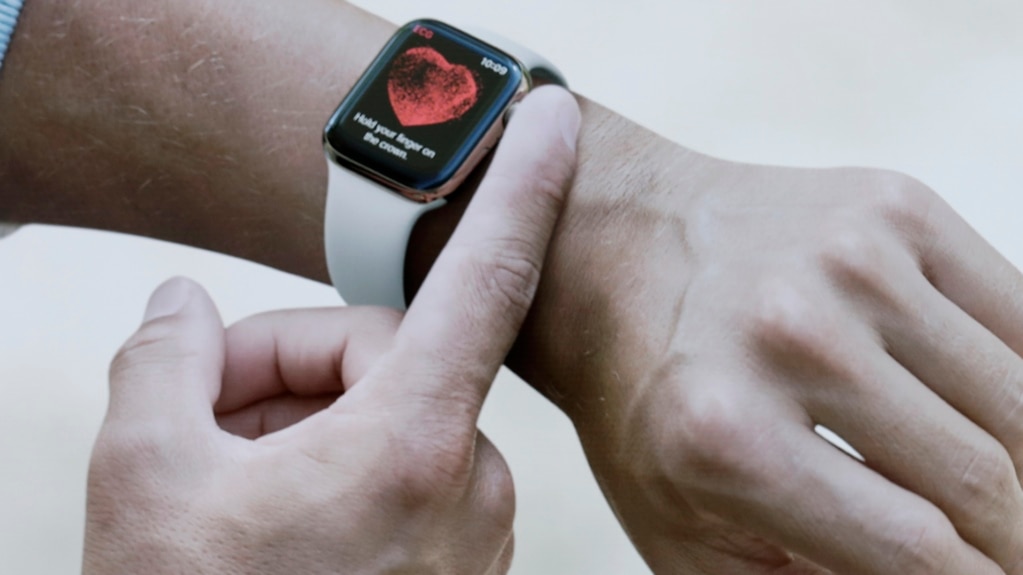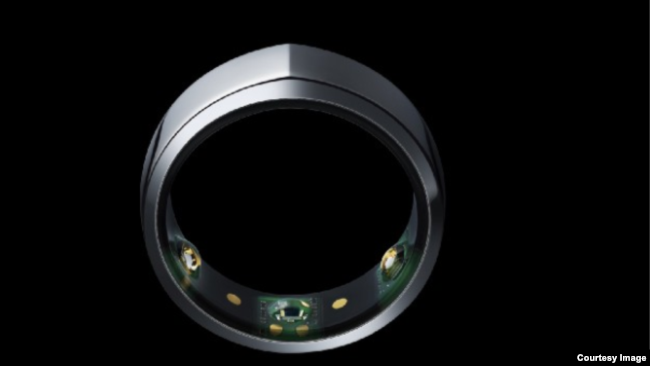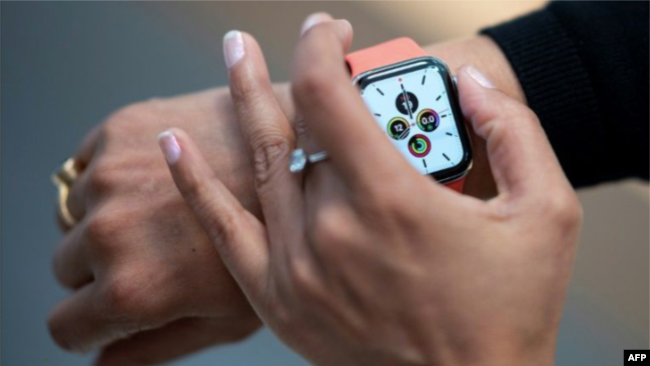ウェアラブル端末・スマートウォッチ、何でもできる魔法のよう!!!
健康管理に、通知機能、電子マネー決済、音楽再生、写真撮影、音声操作・音声アシスタント。。。
そこに、COVIDまで!!! OH OURA RING!!!
さあ、今日のVOAニュース!!
- ウェアラブル・ヘルス・テクノロジーはCOVID-19の初期の兆候を発見する可能性がある
- OURA RINGとは
- あなたにはどのウエラブル?
- Wearable Health Technology Could Find Early Signs of COVID-19
- Words in This Story
ウェアラブル・ヘルス・テクノロジーはCOVID-19の初期の兆候を発見する可能性がある
Wearable Health Technology Could Find Early Signs of COVID-19
研究者たちは、COVID-19をはじめ、病気の早期兆候を特定するためのウェアラブルデバイスの有効性を研究しています。すでに多くの人がFitbitやApple Watchなどのデバイスを使って心拍数やその他の身体活動量を測定しています。研究者たちは現在、この種の技術を使ってCOVID-19の早期警告サインを見守ることができるかどうかを研究しているのです。そのようなデバイスの一つが、米国のウェストバージニア大学でテストされています。同大学の研究者は5月に、COVID-19の症状が出始める3日前までに特定できることを報告しています。研究者たちは、オーラリングと呼ばれる装置を使ってテストを行っています。指に装着するこのリングは、約2年前から存在しています。それは、身体活動、睡眠の有効性と心臓の健康を監視するために設計されました。リングは収集した情報をアプリに送り、ユーザーの活動の質を評価するのです。アプリは人工知能(AI)のツールを使って、体温が高い、呼吸が苦しいなどのCOVID-19関連の症状の開始を予測します。 ここで見られるオーラフィットネストラッカーのようなウェアラブルデバイスは、COVID-19の感染を予測する可能性のある症状を監視するために使用されています。
研究者たちは、初期のテストでこのシステムが ”COVID-19に関連した症状の発症を3日前に予測できる” ことを示したと述べています。90%以上の成功率を報告しているのです。アリ・レザイ氏は大学のロックフェラー・ニューロサイエンス研究所の所長。レザイ氏は声明の中で、このシステムがCOVID-19や他の急速に蔓延する病気に対処する医療従事者や救急隊員を守るのに役立つと考えていると述べています。最近、全米バスケットボール協会(NBA)は、COVID-19の可能性のある兆候をできるだけ早く特定する試みとして、オーラリングを選手に提供することを決定しました。カリフォルニア州サンディエゴのスクリップス研究所では、もう一つの研究プロジェクトが行われています。デテクト研究では、3万人以上のボランティアが身につけているデバイスのデータを調査しています。これは、まだ症状が出ていない人のCOVID-19の開始をウェアラブルが予測できるかどうかを示すことを目的としています。スクリップスの研究者たちはすでに、ウイルス感染の予測におけるウェアラブル技術の価値を実証しています。彼らの発見は、英国の出版物 ランセット に今年初めに登場しました。
両研究の結果は、装置が「症状が出る前であっても、まだ感染している人を特定する可能性がある」と、スクリップス研究のリーダーであるジェニファー・ラディン氏はフランスの報道機関AFP に話しています。スクリップスの研究者は、ウェアラブルからのデータが温度の測定値よりも信頼性が高く、効果的である可能性があることを示すことを期待しているといいます。「COVIDを発症した人の4割は発熱しません」とラディン氏は言います。「これは、体温チェックよりも優れたスクリーニングに使用できるものです。」一つの効果的な予測因子は、安静時の心拍数です。専門家によると、安静時の心拍数は通常、感染前には変化がないためです。「熱が出始める4日前には心拍数の変化が見られる」とラディン氏は付け加えています。心拍数は、ほとんどのウェアラブルで簡単かつ効果的に測定できます。エリック・トポル氏、スクリップス研究所所長はAFP通信に、ウェアラブルを使用するというアイデアは有望に見えると語っています。同氏は、すでに1億人以上のアメリカ人がスマートウォッチや他のフィットネスモニタリング機器を持っていると指摘しています。
このようなデバイスは研究者に重要なデータを提供することができるが、良い結果を得るためには、研究に参加するように多くの人々を説得する必要があるとトポル氏は指摘しています。カリフォルニア州スタンフォード大学の研究者たちは、スクリップスと共同で、ウェアラブルを使ってCOVID-19を検出する研究を4月に開始しました。「スマートウォッチなどのウェアラブルは1日に何度も何度も測定を行います...それが、これほど強力なモニタリングデバイスになっている理由です」とマイケル・スナイダー氏は言います。彼はスタンフォード大学医学部のゲノム・個別化医療センターを率いています。スナイダー氏は、AIを搭載したデバイスは、自分では気づかないかもしれない重篤な障害の兆候を個人が識別するのを助けるのに役立つ可能性があると付け加えています。そのような技術は「体が感染症を撃退している場合に家にいるべきかどうかを判断するのに役立つ可能性があります」と彼は言っています。
OURA RINGとは
オーラリングは人体のいろんなデータを測定して睡眠・健康を維持管理する指輪型のウェアラブルデバイスのこと。 フィンランド発のベンチャー企業が販売しています。
下記H.P.~購入可能です。
参考価格:314USD(日本円で約35,000円)
Amazonでも購入可。
¥49,800 (2020/07/25 15:50:06時点 Amazon調べ-詳細)
あなたにはどのウエラブル?
Wearable Health Technology Could Find Early Signs of COVID-19
 An image of the Apple Watch Series 4 is shown during a presentation at the Steve Jobs Theater during an event to announce new Apple products on Wednesday, Sept. 12, 2018, in Cupertino, Calif. (AP Photo/Marcio Jose Sanchez)
An image of the Apple Watch Series 4 is shown during a presentation at the Steve Jobs Theater during an event to announce new Apple products on Wednesday, Sept. 12, 2018, in Cupertino, Calif. (AP Photo/Marcio Jose Sanchez)

